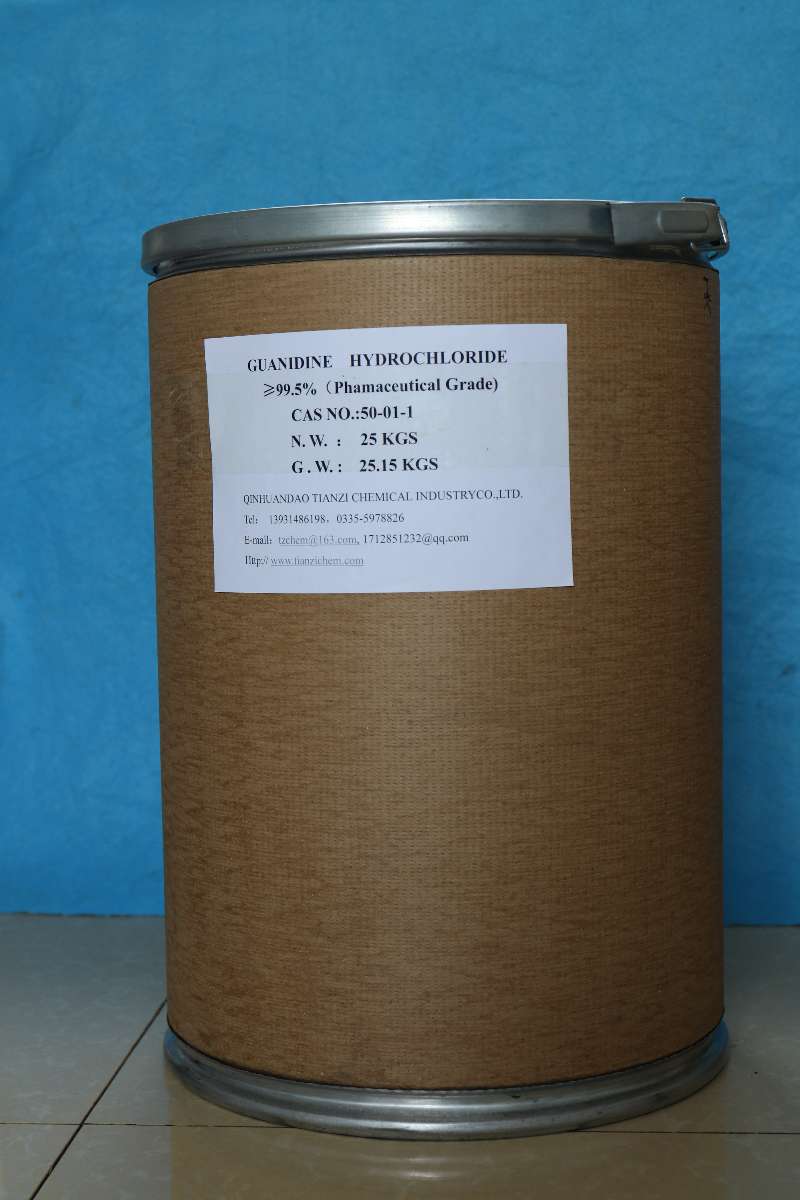- Español
- Português
- русский
- Français
- 日本語
- Deutsch
- tiếng Việt
- Italiano
- Nederlands
- ภาษาไทย
- Polski
- 한국어
- Svenska
- magyar
- Malay
- বাংলা ভাষার
- Dansk
- Suomi
- हिन्दी
- Pilipino
- Türkçe
- Gaeilge
- العربية
- Indonesia
- Norsk
- تمل
- český
- ελληνικά
- український
- Javanese
- فارسی
- தமிழ்
- తెలుగు
- नेपाली
- Burmese
- български
- ລາວ
- Latine
- Қазақша
- Euskal
- Azərbaycan
- Slovenský jazyk
- Македонски
- Lietuvos
- Eesti Keel
- Română
- Slovenski
- मराठी
- Srpski језик
Common questions and answers in the preparation of guanidine thiocyanate solution
2021-09-16
Guanidine thiocyanate is a strong protein denaturant. It can not only rapidly dissolve proteins, lead to the fragmentation of cell structure, and quickly separate nuclear proteins from nucleic acids due to the destruction of secondary structure, but also has a strong denaturation effect on RNases. Therefore, guanidine thiocyanate can be used as a denaturant to lyse cells, separate RNA from protein, and release RNA into solution. However, some problems are often encountered in the preparation and use of guanidine thiocyanate solution. This paper will answer these problems one by one.
Does guanidine thiocyanate solution need to be used and prepared now?
The final concentration of guanidine thiocyanate was 4m as an example: 42mm sodium citrate, 0.83% n-Lauryl sarcosine (sodium dodecyl, n-methylglycine), 0.2mm β- Preparation of CSB buffer from mercaptoethanol; 25g guanidine thiocyanate and 33ml CSB buffer solution are mixed until completely dissolved. The denatured solution can be prepared by heating and dissolving at 65 ℃ and stored at 4 ℃ for standby.
Therefore, guanidine thiocyanate solution does not have to be used and prepared now, and there are solutions of different concentrations on the market at present, but the storage time is not easy to be too long, otherwise there will be precipitation, which needs to be carefully checked before use; In addition, if there is too much one-time preparation, it is recommended to repack.
Does guanidine thiocyanate solution need sterilization after preparation?
It is not necessary to sterilize guanidine thiocyanate solution, which is not very stable, and 0.1% DEPC water is generally used with pyrolysis solution, and the water has been sterilized. In addition, all reagents for extracting RNA need to be prepared with DEPC water, and the reagent should be newly opened and used exclusively for RNA.
Although the prepared lysate does not need to be sterilized, it should be noted that the plastic products used in the experiment have been marked RNase free. If they have not been opened for use, they can be used directly. Others must be treated: add DEPC into double distilled water to make its final concentration 0.1%, soak the plastic products in it, ventilate the kitchen overnight, and then seal them with aluminum foil, High temperature and high pressure sterilization for at least 30min, dry and standby.





